Why Bowl Size and Attachments Matter (Quick Primer)
I’ll save you mistakes I made: wrong bowl, ruined dough, messy counter. The right bowl size affects mixing performance, recipe yields, storage, and cleanup.
Attachments change outcomes — whisk, paddle, dough hook — each has a clear job. Read on and I’ll help you choose what actually matters for your kitchen. Quick, practical guidance today.
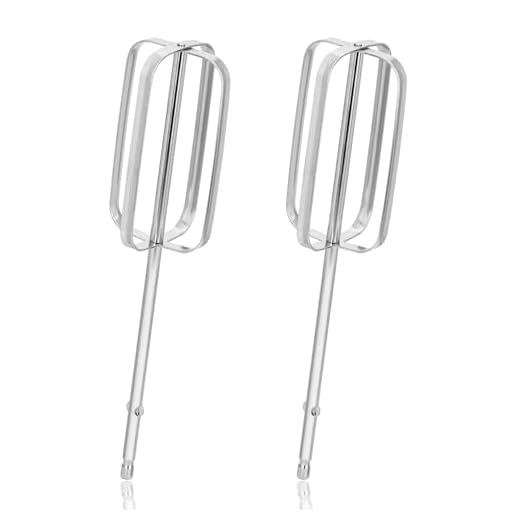
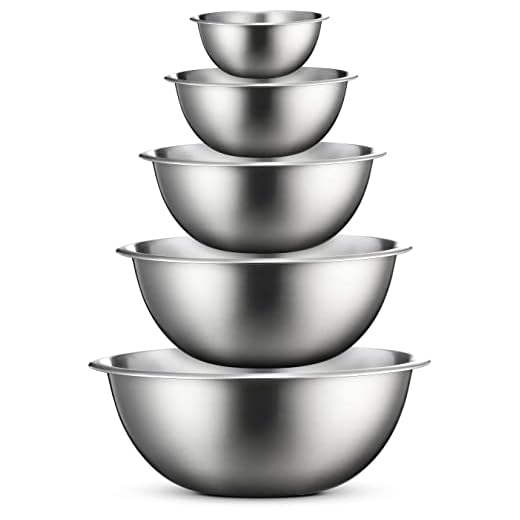
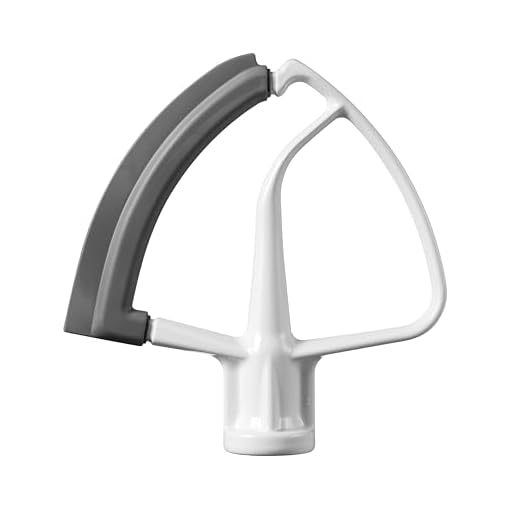
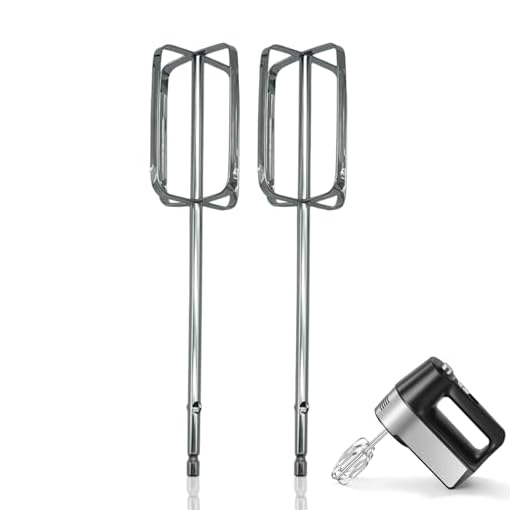
Understanding Mixer Bowl Sizes: Small, Medium, and Large (and What They Mean in Practice)
Usable vs. total capacity
I always judge bowls by usable capacity — the volume you can safely mix without splatter — not the stamped number. A “5‑qt” bowl usually gives ~4–4.5 qt usable. Rule of thumb: subtract ~15–20% for headroom.
Headroom matters for rise and aeration
For whipped cream, meringues, or high‑rise doughs I leave at least one‑third empty. For aggressive whipping (meringue) I aim for half the bowl free so the foam can expand.
Shape and mixing action
Deep, narrow bowls concentrate ingredients for dough; wide, shallow bowls speed whipping. I prefer the KitchenAid Artisan 5‑qt shape for general work and a deeper 6–7 qt for big breads.
Translate capacity into real batches
Quick practical conversions (approx. usable volumes):
- 4–4.5 qt: ~6–8 cups dough — 1–2 sandwich loaves or 1–2 cookie batches.
- 5–6 qt: ~9–12 cups — 2–3 loaves or multiple cookie batches.
- 6–7+ qt: ~12–16+ cups — large bread or batch baking.
Pitfalls to avoid
- Overfill: splatter, poor mixing, stress on motor.
- Underload: uneven mixing; for tiny jobs use a smaller bowl or hand tools.
Attachments 101: What Each Tool Does and When I Reach for It
Flat beater / paddle
The workhorse for cookie doughs, cake batters, and frostings — it folds and scrapes without over‑aerating. Correct use: mixture looks homogenous and slightly lifted; wrong use: gummy, streaky batter or excessive splatter. Clear wins: chocolate chip cookies, buttercream.
Dough hook
Designed for kneading yeast doughs by stretching gluten. Correct use: dough clears the bowl sides and forms a smooth ball; wrong use: loose, shaggy dough or mushy, overworked loaf — and your mixer will hum. Great for sandwich loaves and pizza.
Wire / balloon whisk
For aeration — meringues, whipped cream, mousses. Correct use: fast volume gain and glossy peaks; wrong use: slow, dense results or overwhipped curdling. Use for pavlova and stabilized whipped cream.
Specialty tools: flex‑edge paddles, pouring shields
Flex edges scrape while mixing for no‑waste batters; pouring shields keep dry ingredients contained. I reach for these on sticky batters and big batches.
Common mix‑up consequences:
- Using whisk for dough: strains motor, no gluten development.
- Using hook for cake: dense, poorly mixed batter.
Next I’ll map these choices to bowl size and recipes so you pick combos that actually work.
Matching Bowl Size to Recipe and Household Needs: A Practical Decision Tree
Quick decision steps
I ask three questions: What am I making? How often? For how many people? Then I match:
- Breads (yeast/kneaded dough): 5–7 qt for 2+ loaves; 4 qt for single small loaf.
- Cakes and dense batters: 4–5 qt is usually enough.
- Cookies and cookie dough: 3–5 qt depending on batch size.
- Whipped cream/meringues: choose one size up for headroom — 5–6 qt preferred.
Batch frequency & household size
- Daily meal prep or singles: smaller bowl (3–4 qt) saves space.
- Family baking or frequent entertaining: 5–6 qt is my sweet spot.
- Serious hobbyist or big batches: 6–7+ qt.
Scaling, headspace, and when to split
- Leave ~1/3–1/2 bowl free for high-volume aeration (meringue, whipped cream).
- For wet batters, 1/4 free is fine.
- If a recipe would fill >60% of bowl or produce >50% expansion, I run two batches. That keeps motor strain low and results consistent.
Next up: what I check about compatibility, materials, and extras before upgrading.
Compatibility, Materials, and Accessories: What I Check Before I Buy
Fit and mixer type
I first verify attachment fit (model number matters — “fits most” is a red flag). Tilt-head (KitchenAid Artisan) is great for home cooks; bowl-lift (KitchenAid Professional) adds stability for heavy doughs. Check bowl-lock type and whether beaters lock or just drop in — that prevents wobble.
Materials: pros, cons, and real-world effects
- Stainless steel: lightweight, durable, best heat transfer for quick cooling; usually dishwasher-safe.
- Glass: lets you watch mixing, but retains heat and can chip.
- Ceramic: pretty, heavy, retains heat — not ideal for whipping.
Essential accessories I look for
- Splash guard with pour chute
- Extra bowl (for switching tasks)
- Silicone scraper beater or separate bowl scraper for quieter, cleaner mixes
Practical red flags
- Vague compatibility claims, missing bowl diameter/depth, non-removable attachments, and “hand-wash only” labeling when you need dishwasher-safe parts. Next, I’ll cover how to maintain and store these items so they last.
Maintenance, Storage, and Smart Upgrades I Recommend
Cleaning & inspection
I rinse bowls and attachments immediately, soak in warm soapy water, then hand-dry to avoid water spots. Don’t use steel wool or bleach on stainless — that causes pitting and discoloration. For stubborn stains I rub a paste of baking soda + water. Check shafts, splines, and locking tabs monthly; replace if metal thins, bends, or the fit is sloppy.
Storage & organization
Nest bowls by size, store beaters/hooks in a shallow divided drawer, and hang rarely-used attachments on a pegboard so they don’t get banged. Keep one ready-to-go bowl on the counter if you bake daily.
Smart upgrades I recommend
- Extra-capacity bowl (7‑qt stainless for big batches — useful for holiday bread).
- Heavy-duty spiral dough hook for frequent bread makers.
- Nonstick/silicone-edged paddle (saves scraping time and cleanup).
Skip overpriced “universal” attachments and cheap chrome knockoffs; they wear fast and can damage your mixer.
Quick fixes I’ve used
Uneven mixing: lower bowl height, slow speed start, scrape mid-cycle. Wobble: clean the hub, reseat or replace worn adapter/bushing. These small checks save costly repairs.
Now I’ll wrap up with my bottom line and buying advice.
My Bottom Line: How I Choose the Right Setup for You
I boil it down: choose a bowl that fits typical batch size, pick attachments you’ll actually use, and prioritize compatibility and storage. Small for singles, medium for families, large for bakers.
My checklist: usage, space, budget, materials, and extras. Try one recipe test to confirm—then commit and enjoy consistent results.
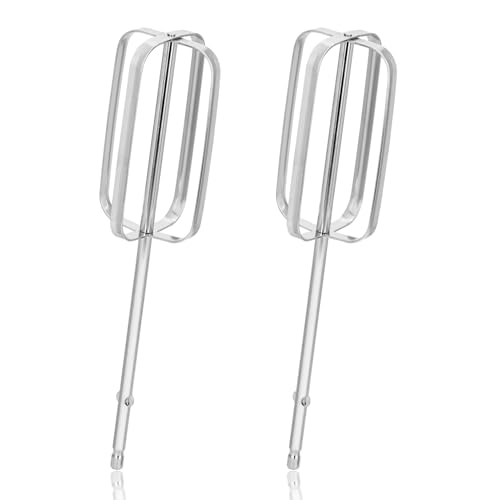
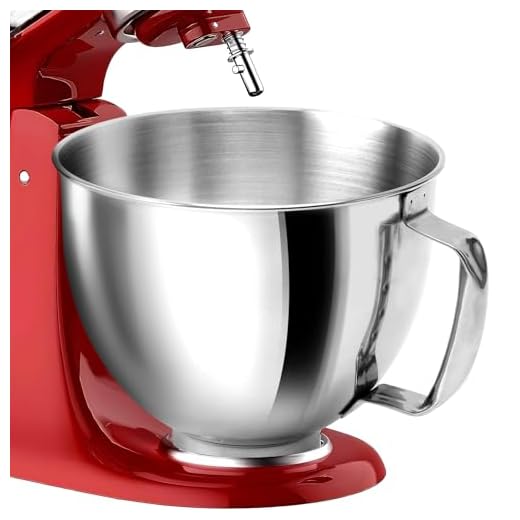
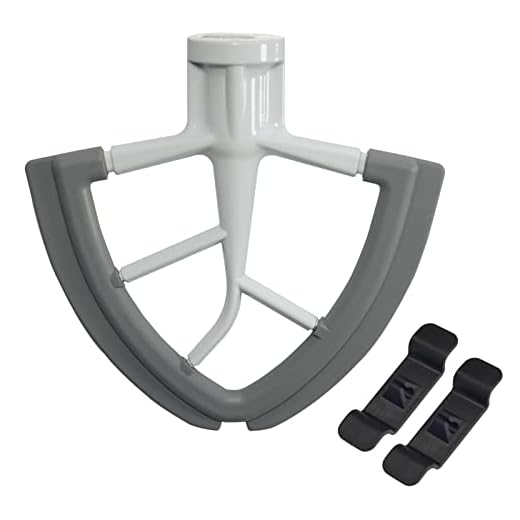

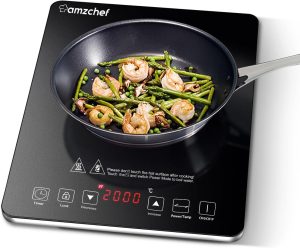

29 comments
Liam O'Connor
Honestly, I was lost until the Practical Decision Tree. For a 2-person household who bakes sourdough maybe twice a month, small bowl? medium? I keep overbuying and then regretting it 🙃 Also — are the 2-Pack Stainless Steel Hand Whisk Replacement Beaters worth it or just cheap junk?
Rita Singh
Medium bowl here. Makes life easier and I don’t regret upgrading from a tiny one.
Theo Gardner
If you want multi-use, get the FineDine nesting set — you can keep a medium and a small ready without clutter.
DanCC
For occasional sourdough and small-batch bakes, a medium bowl (3–4 quarts) is usually the sweet spot. It gives room for growth but doesn’t take over your cabinet. As for the hand whisk replacements, look for sturdier wire gauge and solid welds — some cheap ones flop. If you plan to whisk a lot, buy quality; for occasional use, a 2-pack is fine.
Rachel Kim
Helpful article overall. I liked the compatibility checklist but wish there was a clearer comparison of materials — stainless steel vs glass vs plastic for bowls. The FineDine Five-Piece Nesting Stainless Steel Mixing Bowls are tempting but are there reasons to pick glass instead (e.g., microwaving, seeing the mix)? Also, not sure about handles: is the 5-Quart Stainless Steel Mixer Bowl with Handle actually comfortable for heavy dough, or just a marketing thing?
Laila Morgan
If you bake a lot, invest in stainless. The FineDine set has a really good weight to it — feels solid.
Connor Blake
Glass is lovely for custards that need to go into the microwave, but for everyday mixing stainless wins for me.
Evelyn Parker
One more thing: plastic can warp over hot water; avoid using it for hot sauces or lots of heat.
DanCC
Good question. Short version: stainless is durable, non-reactive, and great for cold mixing; glass lets you see what’s happening and can go in microwave but can break and is heavier; plastic is lightweight and cheap but stains/absorbs odors. For heavy dough, a sturdy handle on a 5-quart bowl is genuinely useful — it makes transferring the dough to the counter easier and safer.
DanCC
Also note: some mixers only accept specific bowl shapes (e.g., bowl-lift vs tilt-head). Always check that your 5-quart bowl is the one designed for your mixer model before buying.
Daniel Park
Nice breakdown. I’m a lazy bachelor and mostly use a hand mixer — are the 2-Pack Stainless Steel Hand Mixer Beaters (4 Sticks) basically universal? Also the FineDine nesting bowls look neat but do they take up more space than they save? lol
Hannah Lee
I have the FineDine set — super compact. Only downside: the lids (if you get them) can be a pain to stack properly.
DanCC
Most hand mixer beaters are interchangeable across popular models, but not universal — check the shaft shape (round vs notched). The 2-pack is handy for having a spare. Nesting bowls usually save space compared to separate single bowls, but measure your cabinet height for the largest bowl before ordering.
Priya Desai
Loved the compatibility photos in the article! I have a couple random q’s (sorry, long post incoming 😅):
– Do the 2-Pack Stainless Steel Hand Mixer Beaters fit my cheap Hamilton Beach hand mixer? I bought an off-brand once and the shape was different.
– For storage, the FineDine nesting bowls sound perfect but my cabinet is low — will they stack flat enough?
– Any tips for keeping silicone paddles from collecting smells? I live in a humid place and sometimes things take on funk.
Thx in advance, this post saved me from buying a humongous bowl I wouldn’t use.
DanCC
Also consider a breathable bin for storage if humidity is an issue — plastic bins trap moisture and can lead to smells.
Clara Rhodes
Baking soda + sunlight = magic for silicone. Works wonders on silicone spatulas too.
DanCC
Answers: 1) Check the shaft end — Hamilton Beach often uses a round shaft, so many generic beaters fit, but verify the product photos. 2) FineDine usually stacks pretty flat, but measure the tallest bowl against your shelf height. 3) To prevent silicone odors: rinse immediately, use baking soda paste occasionally, and avoid storing wet. Let them air dry fully before tucking away.
Samir Patel
I had the same Hamilton Beach worry — I sent the seller a pic of my mixer end and they confirmed. Worked fine.
Oliver Grant
Solid guide, but felt a bit light on real-world recipe examples. Like, the difference between small/medium/large is clear on paper, but I wish there were photos or examples: “this recipe = small bowl” etc. Also, the product list is fine, but maybe add a note about cheaper vs premium beaters — some cheap 2-pack Stainless Steel Hand Mixer Beaters bend after a month. Not a fan of the affiliate-y tone toward the end.
DanCC
Fair points — I’ll add concrete recipe-to-bowl pairings and photos in the next update. Regarding cheap beaters, I mentioned checking wire gauge and seller photos, but I’ll emphasize longevity and real-user photos more. Appreciate the candor.
Noah Fletcher
Agreed on the examples — screenshots of a few bowls with batter quantities helped me when I first learned.
DanCC
Thanks for the heads-up on tone. I’m the author and trying to balance product mentions with impartial advice — will tweak the wording to be less salesy.
Ethan Brooks
Short and sweet — nice write-up. Quick ask: I’m eyeing a tilt-head model and the KitchenAid Flex-Edge Beater for Tilt-Head Mixers — any heads-up on installation quirks? Also, is the handle on the 5-quart bowl removable? 😂
Maya Thompson
Yep, mine clicked in once lined up right. Took 10 seconds. The handle is definitely not removable on mine.
DanCC
Installation for Flex-Edge beaters is generally straightforward — align, push until it locks. If it feels loose, don’t force it. And no, handles on the 5-quart bowls are usually fixed — they’re welded or cast for strength.
Maya Thompson
Great guide — finally someone who explains bowl sizes without the fluff.
I have a tilt-head KitchenAid and was debating between the 5-Quart Stainless Steel Mixer Bowl with Handle and a set like the FineDine Five-Piece Nesting Stainless Steel Mixing Bowls. I bake for a family of 4 and occasionally make big batches of cookie dough. The article’s decision tree helped, but quick Q: will the Flex-Edge Beater for Tilt-Head Mixers give me better scraping than the Flex-Edge Beater Paddle with Silicone Scraper Edges, or are they basically the same thing? Also — any compatibility tips so I don’t accidentally buy knockoffs on Amazon?
Aiden Morales
I use the official KitchenAid flex-edge on my tilt-head and the scraping is noticeably better than the generic one I tried. Worth the extra $ imo.
DanCC
They’re similar in purpose but different fit: the KitchenAid Flex-Edge for tilt-head is designed specifically for that head type and often has the exact clip/fit for those mixers. The generic Flex-Edge paddle with silicone edges can work, but double-check your mixer model and the product listing for ‘fits tilt-head’ or specific model numbers. For knockoffs, look at seller ratings and returned customer photos — they tell you a lot.
Zoe Winters
If you’re doing cookie dough, go with the 5-quart bowl — handles are underrated for dumping heavy dough. Nesting bowls are great for prep though.